Ángel León has the force of the strong Atlantic waves that shake the rocks of his El Puerto de Santa María, a town right outside Cadiz which he has brought to international culinary acclaim as the location (that is to say the heart and brain) of Aponiente. This is a great restaurant, for sure: but it's more. It's an extraordinary lab for research and culinary ideas applied to the sea. And it's even more than that: it's the place where the chef from Andalusia designs the widening of the edible borders, which means finding in sea water – which covers 75% of the planet – what we're finding it harder and harder to find on land. The sea is the new land and León is his Moses parting its waters.
A frontier that León explores with method, which results in constant intellectual stimuli that become small culinary revolutions. This was the case with plankton, his trademark. And then, as we wrote: "seabass to make mortadella; mussels to make blood sausage; moray eel skin to imitate pork rind; boiled hake to make noodles; and various parts of a tuna head to make ossobuco". But the activity is endless, «we've only studied 1% of what the sea can give», he gave a proof of this at Gastronomika 2021, the new edition of the historic congress in San Sebastiàn where he was one of the top protagonists. We can easily say his lesson was by far the most interesting and richest in novelties. One which in fact he only mentioned: rice fields in the sea. And then sea olives. And the development of a long-term project: in the series of sea cheese that have made the cheese offer at Aponiente rich, there's a new fantastic camembert. The appearance and flavour is very similar to the French original, but it's made with red tuna. Let's start from the latter, it's easier (with a further premise. We use the words of León himself as he explains why he never offers lobsters and the like: «What is more hedonistic: eating something that nobody on earth has ever tried, or eating another bloody spoon of caviar?»).
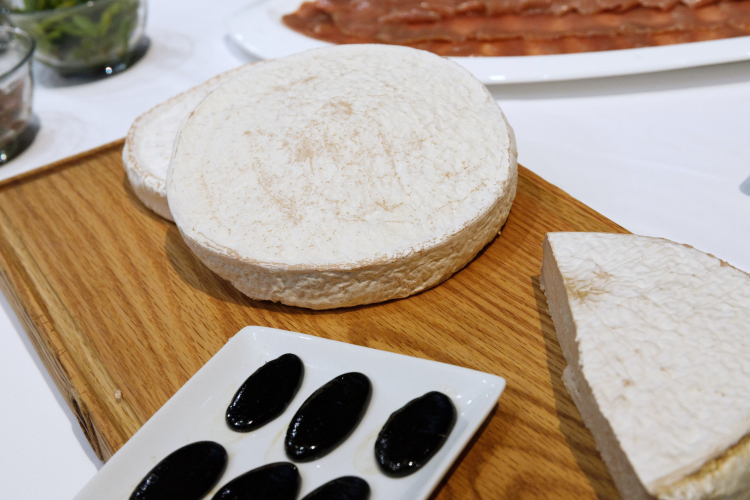
The camembert made with red tuna milt
says it all began from his frequent thoughts on alternative proteins that can be sourced from the sea. The initial input was to look among the waves for an alternative to milk. The method became: let's study what white things we can find in the sea. The answer:
huevas de leche («Here is the magic word, "leche"», that is to say milk), so milt, the sacks of semen from tuna males, which we also eat in Italy, especially in Sicily and Sardinia. The chef removes the blood. Then he leaves them for 24 hours in a mix of ice and blood. He minces them. He makes an infusion for one hour at 40°C with a jellifying seaweed, to start a coagulation process. They rest like this for exactly one day at controlled temperature, the mass stabilising its structure. Then they inject the
Penicillium camemberti, the mould "responsible" for the crust that is typical of the famous French cheese.
The result? After three weeks – this is the length of the ageing, the "tuna camembert" that León presented at Gastronomika 2021 – tastes like the cheese, but with a «final de salazones», a seafood aftertaste, sapid and «very elegant». The chef jokes: «Yes, it's a cheese made with the sperm of red tuna. But it's very good cheese». The next season at Aponiente, sea camembert will be paired with dates extracted from rupia, the seaweed – with a high concentration of sugar, 45% - with which León makes his "sea honey".
SEA OLIVES
The plant is called Sesuvium, it belongs to the Aizoaceae family, to which our portulaca also belongs. It's a halophyte species, that is to say it has "adaptations" that allow it to settle in salty soil, like beaches or brackish lagoons. It's very strong; it produces flowers and then fruits, small berries with an oblong shape, which are vaguely similar to cucunci, and in different colours, with shades that go from green to black and red. Just like olives: and, the incredible thing is, the flavour too seems that of olives. León was impressed and he's as excited as a child. So here are the sea olives.
No, you cannot make oil, the structure is largely made of water, 25%. But there's still an incredible resemblance in terms of appearance and taste, «it's surreal, but sea is often surreal».
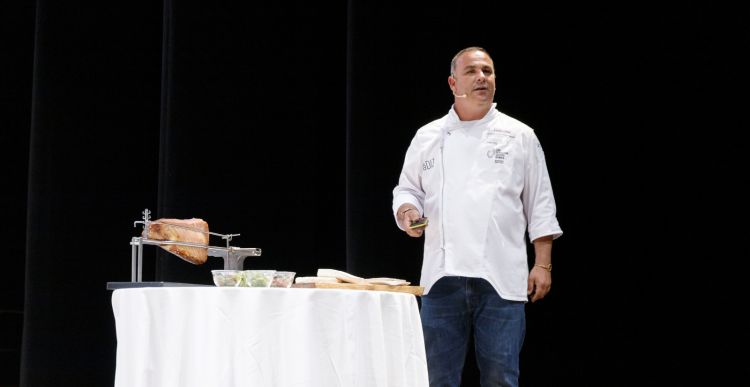
Ángel León's sea aperitivo
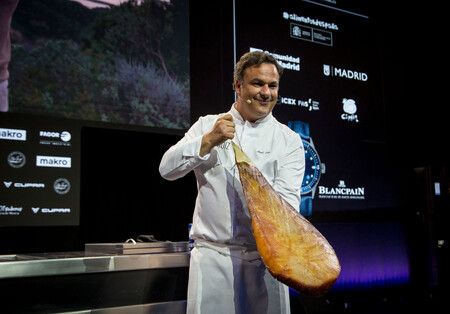
The red tuna ham presented by Ángel León, this photo is from Madrid Fusión 2021
These sea olives are naturally salted, and are prepared in brine and then enjoyed as a snack. The discovery allows
León to present the guests of
Aponiente a whole oceanic aperitivo made with sea olives, sea cheese (the above-mentioned tuna camembert) and then sea ham, that is to say an incredible red tuna
jamón which the chef had already presented a few months ago, and you can cut it just like jamon, of which it also imitates the shape. It's made with the belly – the fatter part – of tuna that weighs between 150 and 175 kg, «we used the wind to dry it, and then dry brine and finally cold, to further help in extracting the water», a process that lasts around 10 days. And the aroma? «It's tasty, greasy, pure umami. The presence of fat and the process of ageing give a result that has nothing to envy to Iberian ham. Plus in this case we have pure Omega 3».
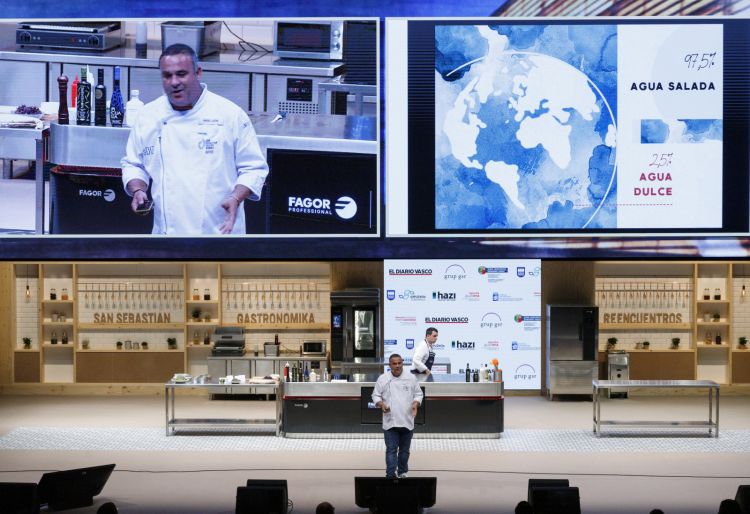
León at Gastronomika 2021
Without diminishing what we've said so far, the "sea rice" is perhaps the most extraordinary and fertile project. It's in progress,
León only mentioned it at
Gastronomika, but he had already spoken about it to the press, and more in depth, a few months ago, in a piece that the authoritative weekly magazine
Time titled
Seeding the Ocean: Inside a Michelin-Starred Chef's Revolutionary Quest to Harvest Rice From the Sea. A feature which was widely shared in Spain, for instance by
La Vanguardia in Barcelona:
Ángel León descubre un revolucionario "cereal marino". It doesn't require much explanation. Basically, the chef is following an incredible and ambitious dream, that of having rice fields spreading for (sea) miles, the stalks raising above the waves. But is it really rice?
Almost. Fore sure «it's a new road that is opening up for the world». Little under four years ago, at 14 metres deep in the sea of the bay of Cadiz, León and marine biologist Juan Martín found a shrub "that looked like an ear, a cereal". For the chef this wasn't such a surprise: he recalled, when as a child, around Cadiz he would look at these large fields of "rice" on the edge of the bay. But it wasn't rice. It's a water plant called Zostera marina and it's a Neptune grass (phanerogam), of which there are only four different types in Europe (including the Adriatic Sea) and which are at risk of extinction. It's not even a seaweed, but a vegetal considered superior, with seeds, flowers, rhizomes, and which is born in the sea, it feeds on water and has a crucial biologic and ecologic function. They are the "architects" of ecosystems, according to the team at Aponiente. Who presented the discovery to a scientific committee at the United Nations. The outcome: they certified the grains of this phanerogam as "a new ingredient" (Martín: «I studied phanerogams for 15 years, and I never thought it could be edible». In fact already in 1973 Science magazine had documented the diet of the Seri people, hunters and harvesters from Sonora, Mexico, who had been eating Zostera marina for generations. Like many cereals, it required a complex process of threshing, screening, toasting and powdering before it was cooked in a liquid mix with water. The Seri people ate this paste with seasonings to enhance its flavour: honey, ore better still oil of sea turtles).
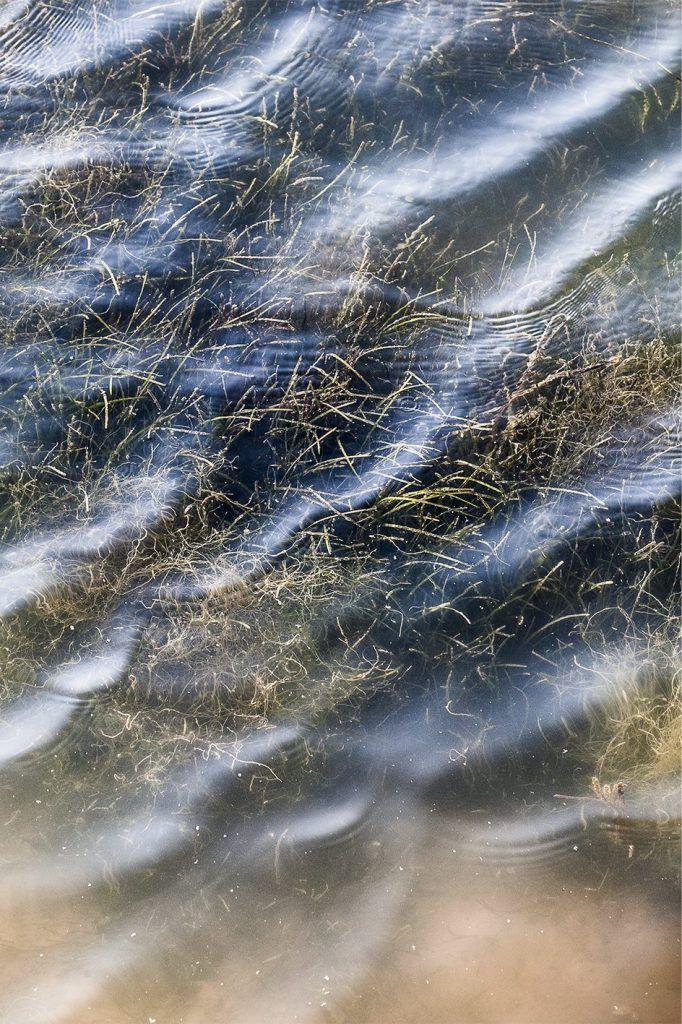
So our
Zostera had already been eaten. But never cultivated. The team at
Aponiente launched a research with the University of Cadiz; in the summer of 2019 they picked 50 kg of these cereals, to analyse its nutrients and make experiments in the kitchen. First conclusions: it's a perennial plant, with an exponential growth and strong nutritional features, with lots of fibres and omega-3 fat. And it's gluten free. There's more: it also tastes good. The grains are more similar to amaranth or chia seeds than rice, but the flavour is more similar to rice, perhaps mixed with quinoa and a delicate salty note.
How can it be used? There are many options. Time suggests milling it to make oil, fermenting it like sakè, milling it to make a gluten free flour and thus make bread, pasta. Or use it boiled like rice... But let's not run too fast. Today León is at work to increase the cultivation of Zostera, soon there will be 5 more hectares available. And he dreams of the opportunities that this "marine cereal" will offer to places with little culinary resources like Africa. «It's all new. Nobody has taken these roads. It's a precious opportunity for nature, for human beings. This is the beginning of a great journey». La Vanguardia explained: for the study of marine cereals, León's team restored some old saltworks and fish farms – abandoned for decades – to use them for farming. The growing of this marine cereal has lower needs and technical prerequisites compared to other common cereals and it's more productive in that this is a perennial plant, so you don't need to plant it each season. The estimate of the yield in nature is of 5-7 tons per hectare, similar to other cereals. Plus, it doesn't require pesticides because it doesn't suffer from known diseases and doesn't require fertilisers. Its rooting in the sea bottom prevents erosion and preserves sediments, thus favouring areas of shelter and reproduction for some species of sea horses or prawns, and it reduces the acidification of the oceans. Following this discovery, Aponiente decided to create the first and only research and development centre specialised in marine farming in the world. The dream of Ángel León of transforming oceans into a healthy "marine garden" for people and fore the planet is getting closer and closer.
Translated by Slawka G. Scarso